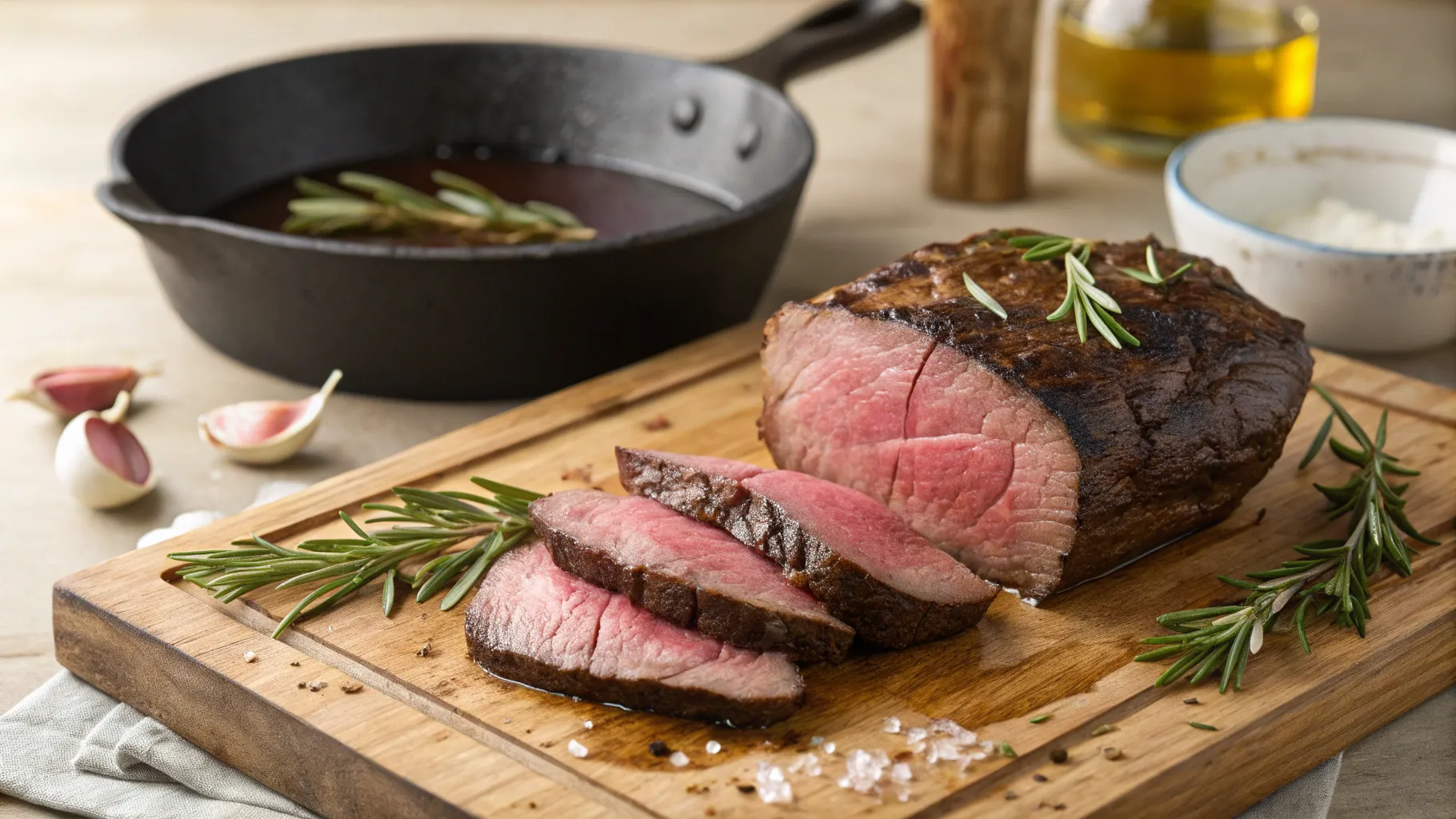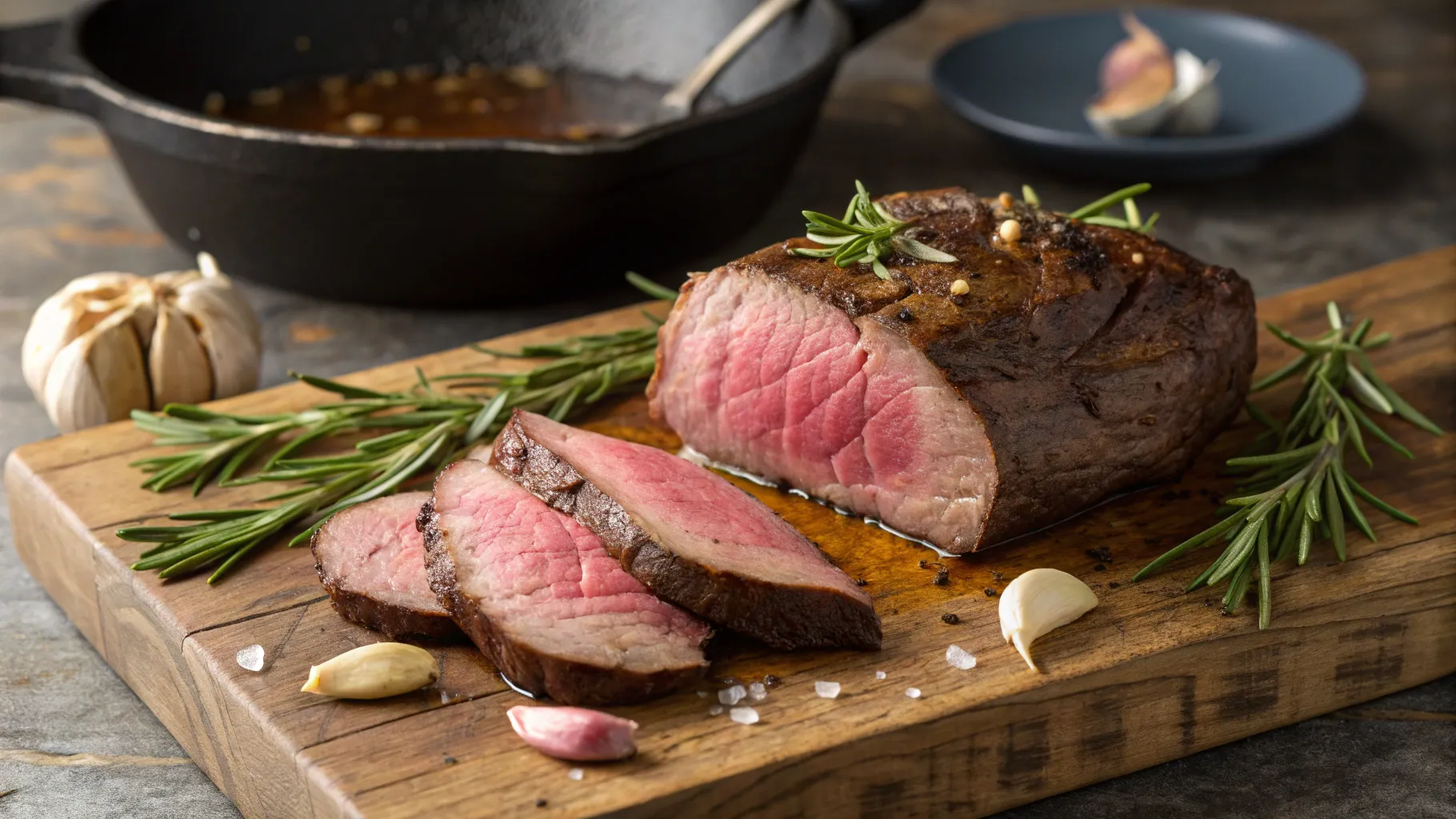Picture this: It’s Sunday evening, and the aroma of perfectly cooked chuck roast fills your kitchen. Your family gathers around the table, eyes lighting up as they take that first tender, juicy bite. But just last week, your chuck roast turned out tough and chewy, leaving everyone disappointed and you feeling frustrated. Sound familiar?
You’re not alone. Countless home cooks struggle with transforming this affordable cut of beef into the tender, flavorful masterpiece it can become. The good news? Learning how to cook chuck roast steak tender isn’t rocket science – it’s about understanding the meat and following proven techniques that work every single time.
Understanding Chuck Roast – Why This Cut Demands Special Attention
Chuck roast comes from the shoulder area of the cow, a region that works hard during the animal’s lifetime. This constant movement develops rich, beefy flavor but also creates dense muscle fibers and tough connective tissues. Unlike premium cuts such as ribeye or tenderloin, chuck roast contains approximately 20-25% more collagen and connective tissue.
Here’s the fascinating part: those tough fibers that make chuck roast challenging actually become your secret weapon for incredible flavor. When you apply the right cooking methods, that collagen breaks down into gelatin, creating a naturally rich, succulent texture that expensive cuts simply cannot match.
The key difference lies in understanding that chuck roast requires time and moisture to reach its full potential. Traditional high-heat steak cooking methods will only result in disappointment, but low, slow techniques unlock extraordinary tenderness and depth of flavor.
Essential Tools and Ingredients for Tender Chuck Roast Success
Must-Have Kitchen Equipment
Before diving into how to cook chuck roast steak tender, gather these essential tools:
- Heavy-bottomed Dutch oven or slow cooker
- Reliable meat thermometer
- Sharp carving knife
- Long-handled tongs for safe handling
Chuck Roast Recipe Ingredients
| Ingredient | Quantity (4-6 servings) | Purpose | Substitutions |
|---|---|---|---|
| Chuck roast | 3-4 lbs | Main protein | Chuck eye roast, shoulder roast |
| Salt | 2 tbsp | Seasoning/tenderizing | Kosher salt, sea salt |
| Black pepper | 1 tbsp | Seasoning | White pepper, mixed peppercorns |
| Beef broth | 2 cups | Braising liquid | Vegetable broth, red wine |
| Onions | 2 large | Flavor base | Shallots, leeks |
| Garlic | 6 cloves | Aromatics | Garlic powder (2 tsp) |
| Carrots | 3 large | Vegetables | Parsnips, turnips |
| Celery | 3 stalks | Aromatics | Fennel bulb |
| Fresh thyme | 4 sprigs | Herbs | Dried thyme (1 tsp) |
| Bay leaves | 2 leaves | Flavor | Rosemary sprigs |
Step 1: Proper Preparation and Seasoning

The foundation of learning how to cook chuck roast steak tender begins with meticulous preparation. Remove your roast from the refrigerator 30-45 minutes before cooking, allowing it to reach room temperature. This ensures even cooking throughout the entire piece.
Pat the roast completely dry using paper towels – moisture prevents proper searing and flavor development. Trim excess fat, leaving about ¼ inch for optimal flavor without excessive grease.
Create shallow crosshatch scores across the surface using a sharp knife. This technique helps seasonings penetrate deeper while providing more surface area for the crucial Maillard reaction during searing.
Seasoning Strategy
Apply salt generously across all surfaces, massaging it into the scored areas. Salt begins breaking down proteins immediately, starting the tenderizing process before heat application. Follow with freshly ground black pepper and any additional spices.
For enhanced results, consider seasoning 2-24 hours in advance, allowing deeper flavor penetration and further protein breakdown.
Step 2: The Critical Searing Process
Proper searing creates the flavor foundation that separates exceptional chuck roast from mediocre results. Heat your Dutch oven over medium-high heat with a high-smoke-point oil like avocado or grapeseed oil.
When the oil shimmers but doesn’t smoke, carefully place your roast in the pan. Resist the urge to move it immediately – allow 3-4 minutes of undisturbed contact for proper browning. You’ll hear the sizzling intensify, then gradually quiet as moisture evaporates.
Turn the roast using tongs, searing each surface until deep golden-brown. This process typically requires 12-15 minutes total for complete coverage.
Common Searing Mistakes to Avoid
- Moving the meat too early prevents proper browning
- Using insufficient oil causes sticking and uneven coloring
- Overcrowding the pan reduces temperature and prevents proper searing
- Excessive heat burns the surface before interior flavors develop
The searing process doesn’t actually “seal in juices” as commonly believed, but it creates complex flavors through the Maillard reaction – the chemical process responsible for that irresistible browned meat aroma.
Step 3: Low and Slow Cooking Methods
After searing, the real magic of how to cook chuck roast steak tender begins. Remove the roast temporarily and add chopped onions, carrots, and celery to the same pan. Cook these aromatics for 3-4 minutes, scraping up the flavorful browned bits from searing.
Return the roast to the pot, add herbs, and pour in enough beef broth to reach approximately one-third up the sides. Cover tightly and transfer to a preheated 325°F oven.
Cooking Time Guidelines
| Roast Weight | Oven Braising (325°F) | Slow Cooker (Low) | Pressure Cooker |
|---|---|---|---|
| 2-3 lbs | 2.5-3 hours | 6-7 hours | 60-75 minutes |
| 3-4 lbs | 3-3.5 hours | 7-8 hours | 75-90 minutes |
| 4-5 lbs | 3.5-4 hours | 8-9 hours | 90-105 minutes |
The braising liquid should maintain a gentle simmer throughout cooking. Check periodically, adding more broth if levels drop significantly.
Alternative Cooking Methods
Slow Cooker Approach: Transfer seared roast and vegetables to your slow cooker with braising liquid. Cook on low for 7-8 hours or high for 4-5 hours.
Pressure Cooker Method: Use the sauté function for searing, then pressure cook for times listed above with natural pressure release.
Step 4: Temperature Monitoring and Doneness Testing
Understanding internal temperature separates successful chuck roast preparation from guesswork. Unlike traditional steaks, chuck roast requires higher internal temperatures for optimal tenderness.
Target temperature ranges:
- 190-195°F: Beginning of tenderness
- 200-205°F: Optimal tenderness (recommended)
- Above 210°F: Risk of drying out
Insert your thermometer into the thickest portion, avoiding contact with bones or fat pockets for accurate readings.
Alternative Doneness Tests
Fork Test: Properly cooked chuck roast allows a fork to penetrate and twist easily with minimal resistance.
Visual Assessment: The meat should appear to separate along natural muscle lines when gently prodded.
Texture Check: Tender chuck roast feels soft when pressed, similar to the flesh between your thumb and forefinger when making an “OK” sign.
Step 5: Proper Resting and Slicing Techniques
Once your roast reaches the target temperature, resist the temptation to slice immediately. Transfer to a cutting board and tent loosely with foil, allowing 15-20 minutes of resting time.
During this period, muscle fibers relax and redistribute juices throughout the meat, ensuring maximum moisture retention in every bite.
Slicing for Maximum Tenderness
Identifying the grain direction is crucial for the final step of how to cook chuck roast steak tender. Look for the parallel lines of muscle fibers running through the meat.
Using a sharp carving knife, slice perpendicular to these grain lines in cuts approximately ½ inch thick. This technique shortens the muscle fibers, making each bite more tender and easier to chew.
Pro Tips for Extra Tender Results
Coffee Rub Enhancement: Combine ground coffee with brown sugar and spices for a unique flavor profile that complements beef beautifully.
Wine Braising: Replace half the beef broth with red wine for added depth and complexity.
Vegetable Bed Method: Place root vegetables beneath the roast during braising, creating a natural rack while infusing additional flavors.
Troubleshooting Common Problems
Tough Results: Extend cooking time rather than increasing temperature. Chuck roast requires patience for collagen breakdown.
Dry Texture: Add warm broth gradually and return to low heat for 30-45 minutes with the lid covered.
Lack of Flavor: Season more aggressively next time and ensure proper searing for flavor development.
Serving Suggestions and Storage
Serve your perfectly tender chuck roast with classic accompaniments like roasted vegetables, mashed potatoes, or crusty bread for soaking up the rich braising liquid.
Create gravy from the pan drippings by straining the liquid and thickening with a flour slurry or cornstarch mixture.
Storage and Reheating
Refrigerate leftovers within two hours, storing in the braising liquid to maintain moisture. Properly stored chuck roast lasts 3-4 days refrigerated or up to three months frozen.
Reheat gently in a covered dish with additional liquid to prevent drying, using low oven heat or stovetop methods rather than high-power microwaving.
Frequently Asked Questions
How long does it take to cook chuck roast steak tender? Typically 3-4 hours in a 325°F oven for a 3-4 pound roast. The key to learning how to cook chuck roast steak tender is low, slow cooking that breaks down tough connective tissues.
What temperature should chuck roast reach to be tender? For maximum tenderness, chuck roast should reach an internal temperature of 190-205°F. This higher temperature ensures collagen breaks down completely.
Can you cook chuck roast steak tender in a slow cooker? Absolutely! Slow cookers are excellent for cooking chuck roast steak tender. Cook on low for 7-8 hours or high for 4-5 hours.
Why is my chuck roast tough even after long cooking? Usually due to insufficient cooking time or temperature. Chuck roast needs to reach 190°F+ and cook long enough for collagen to break down into gelatin.
Mastering how to cook chuck roast steak tender transforms both your cooking confidence and your family’s dinner experience. By following these five essential steps – proper preparation, perfect searing, low and slow cooking, careful temperature monitoring, and proper resting – you’ll consistently create restaurant-quality results at home.
Remember, the key to tender chuck roast lies in patience and technique, not expensive ingredients. This affordable cut of beef, when treated with respect and cooked properly, delivers flavor and tenderness that rivals much more expensive steaks.
Ready to transform your next chuck roast into a masterpiece? Start with quality meat, trust the process, and share your results with friends and family. Soon you’ll be the go-to person in your circle for advice on how to cook chuck roast steak tender. What questions do you have about perfecting this technique? Drop a comment below and let’s discuss your chuck roast cooking journey!

